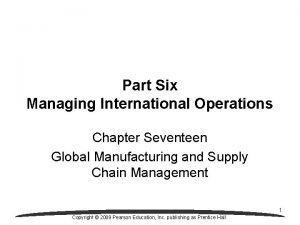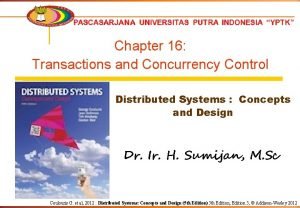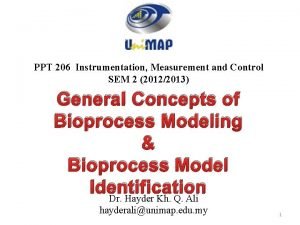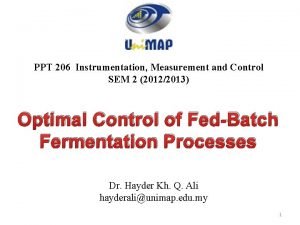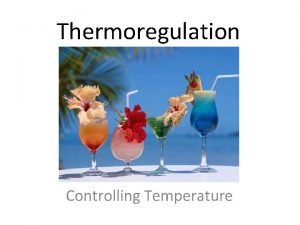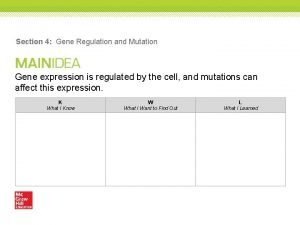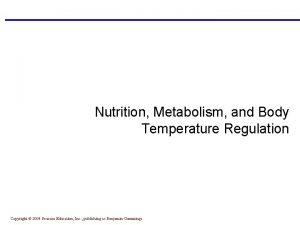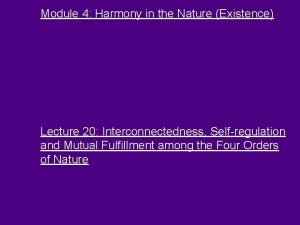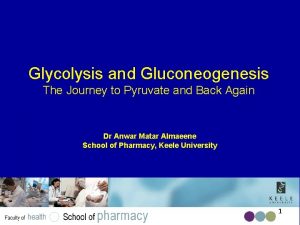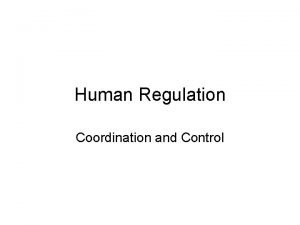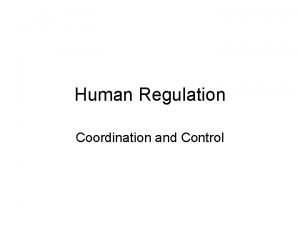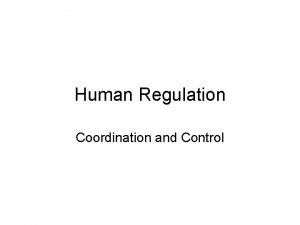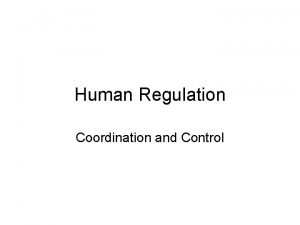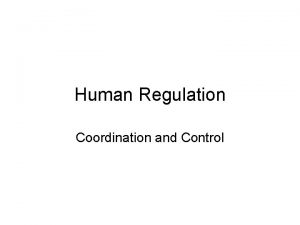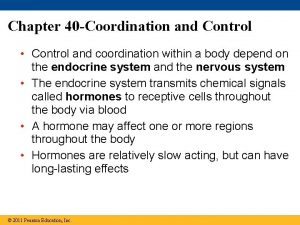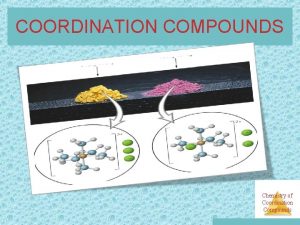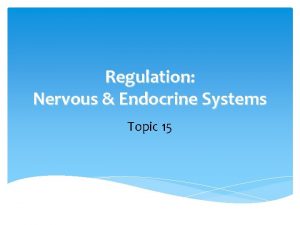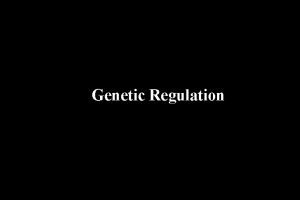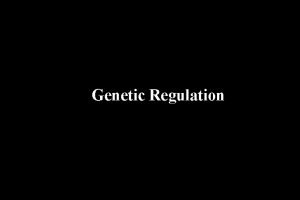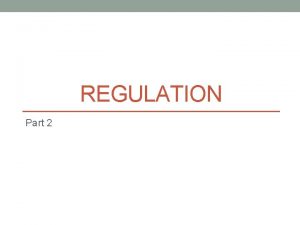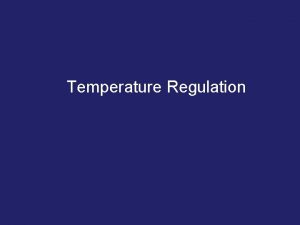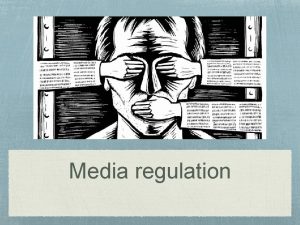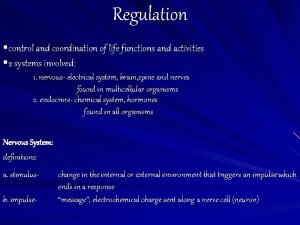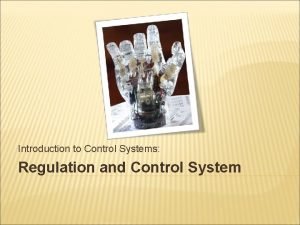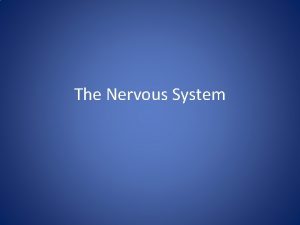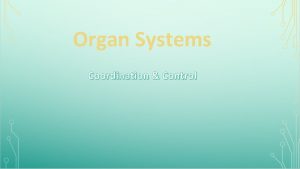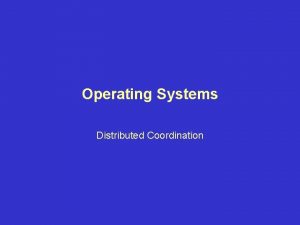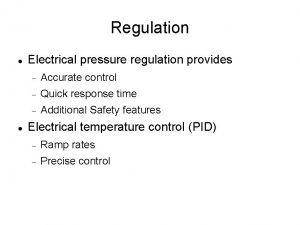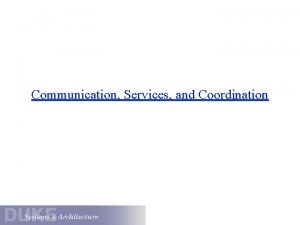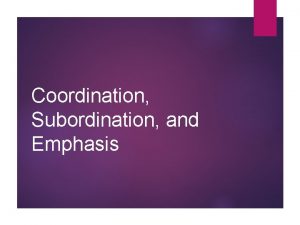4 6 Control Systems Coordination and Regulation of



























- Slides: 27

4. 6 Control Systems Co-ordination and Regulation of Processes

Homeostasis �What is homeostasis? �Mechanisms by which a constant internal environment is maintained.

The urinary system Aorta Renal vein Kidney Renal artery Vena cava Ureter Bladder Urethra © 2008 Paul Billiet ODWS

Deamination in Liver produces Urea… Kidney – structure and function Biological principles in action 4

Human kidney ureter renal artery renal vein attached here 5

1 – Filtration by the Kidney cortex • Supplied with blood from renal artery • Inside it splits into many fine capillaries • Each capillary supplies blood to hundreds of thousands of tiny filtration units called nephrons Renal artery Renal vein Ureter Medulla

The blood supply

The cortex (view x 100) Tubule (Malpighian) renal corpuscles

The corpuscle (view x 400) Glomerulus – a ball of capillaries Bowman’s capsule

Medulla (view x 400) Tubules Capillaries


The nephron In the cortex In the medulla

The nephron Branch of renal artery Branch of renal vein Distal (2 nd) convoluted tubule Bowman’s capsule Glomerulus proximal (1 st) convoluted tubule Capillary Collecting duct Loop of Henlé

1. Glomerulus brings a large surface area of blood capillaries in close contact with Bowman’s capsule 2. Liquid filtered from blood under pressure (filtration) 3. Glomerular filtrate produced containing: -water -glucose -salts -urea (Protein molecules and red blood cells do not pass into tubule as they are TOO BIG!!!!) Blood from renal artery enters wide capillary Filtration Glomerular filtrate Blood travels through narrow capillary towards rena vein The blood plasma is filtered at about 150 litres per day

Blood plasma v Filtrate Component Plasma / mg 100 cm-3 Filtrate / mg 100 cm-3 Urea 0. 03 Glucose 0. 10 Amino acids 0. 05 Salts 0. 72 Proteins 8. 00 0

The nephron functions Freely permeable Impermeable Variable permeability to water

The nephron osmoregulation Active reabsorption Na+ Na+ H 2 O Passive osmosis Ultrafiltration under pressure 80% of water reabsorbed Freely permeable Impermeable Variable permeability to water

The nephron osmoregulation H 2 O Na+ Na+ H 2 O H 2 O Freely permeable Impermeable Variable permeability to water More and more salty Collecting duct Loop of Henlé

The nephron osmoregulation �The blood concentration is monitored by osmoreceptors in the hypothalamus �If the concentration rises the hypothalamus releases ADH �ADH makes the collecting duct walls more permeable �More water is reabsorbed from the filtrate as the ducts pass through the salty tissues of the medulla

The nephron osmoregulation �The urine released into the pelvis is more or less concentrated depending upon the blood concentration �Excessive sweating and eating salty food will produce concentrated urine �Drinking and cold weather will produce dilute urine

Kidney reabsorption Component Filtrate / mg 100 cm-3 Urine / mg 100 cm-3 Urea 0. 03 2. 00 Glucose 0. 10 0 Amino acids 0. 05 0 Salts 0. 72 1. 50 0 0 Proteins © 2008 Paul Billiet ODWS

Reabsorption Microvilli on cuboidal epithelial cells Kidney tubule with brush border Dr Millet USC Med schooll © 2008 Paul Billiet ODWS

The afferent tubules reabsorb: � 80% of water � All of the glucose � All of the amino acids � Blood p. H is regulated � Blood salt levels are regulated � Urea is left behind and even secreted into the tubules Reabsorbed molecules pass into the surrounding capillaries

�Summary of kidney function

Controlling Water Concentration �Blood -important part of internal environment -constantly changing water concentration -e. g. exercising drinking lots of water �The body uses negative feedback control to regulate water content of the blood

How does it work?

�Control of Water animation
![Complexes of the type [m(aa)3]±n show Complexes of the type [m(aa)3]±n show](data:image/svg+xml,%3Csvg%20xmlns=%22http://www.w3.org/2000/svg%22%20viewBox=%220%200%20200%20200%22%3E%3C/svg%3E) Complexes of the type [m(aa)3]±n show
Complexes of the type [m(aa)3]±n show Coordination leadership
Coordination leadership Hub care coordination systems
Hub care coordination systems Compatibility configuration coordination control
Compatibility configuration coordination control Decision support systems and intelligent systems
Decision support systems and intelligent systems Transactions and concurrency control in distributed systems
Transactions and concurrency control in distributed systems Step motors and control systems
Step motors and control systems Measurement and control of bioprocess parameters
Measurement and control of bioprocess parameters Concurrency control and recovery
Concurrency control and recovery Introduction to digital control
Introduction to digital control Digital control
Digital control Computer control of fermentation process ppt
Computer control of fermentation process ppt Dairy plant management
Dairy plant management What is a positive and negative control
What is a positive and negative control Flow control and error control
Flow control and error control Pilorelaxation
Pilorelaxation Section 4 gene regulation and mutation
Section 4 gene regulation and mutation Badminton vs table tennis
Badminton vs table tennis Temperature regulation
Temperature regulation How there is recyclability and self-regulation in nature
How there is recyclability and self-regulation in nature Regulation of glycolysis and gluconeogenesis
Regulation of glycolysis and gluconeogenesis Nco duties and responsibilities
Nco duties and responsibilities Regulation of recruitment and placement activities
Regulation of recruitment and placement activities Section 4 gene regulation and mutation
Section 4 gene regulation and mutation Rules and regulation in table tennis
Rules and regulation in table tennis Regulation and inspection of social care wales
Regulation and inspection of social care wales Government regulation and the legal environment of business
Government regulation and the legal environment of business Hines hill train collision
Hines hill train collision
![Complexes of the type [m(aa)3]±n show Complexes of the type [m(aa)3]±n show](https://slidetodoc.com/wp-content/uploads/2020/12/3015715_d8412bc28f0c7b6a8c2ea3744ce60d97-300x225.jpg)


